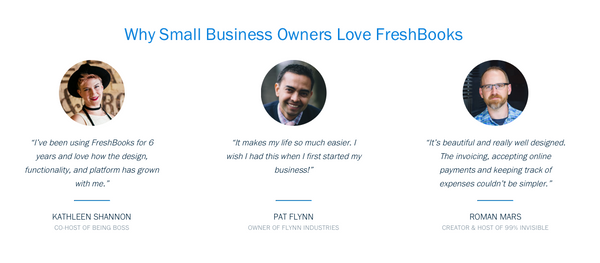5 Ways To Form Better Relationships with Online Customers
Customers are connecting with brands in novel ways, especially via digital or online channels. The digital customer experience is a growing trend, and those brands that are able to capitalize in this space will find that they are forming great and long-lasting customer relationships. The digital experience should be consistent with your in-store experience, allowing customers to feel as though they are walking into your brick-and-mortar location when they log on to your site. Check out these 5 tips to earn the trust of online customers, written by Jessica Bianchi for Shopify. You can access the piece by clicking here, or by reading below:
This piece was originally published by Shopify on May 3, 2017.
“Today’s shopping journey is blended across multiple channels, with the gap between in-store and online experiences quickly closing.
If consumers aren’t turning to their favorite search engine to find information on your product, company or service, they’re using social media to share their opinion about their latest experience.
Whether it’s a long-time customer or a first-time encounter, establishing and maintaining trust is crucial to the long-term success of your retail business. People will spend more money and come back often if they trust your brand. Research shows that 83% of customers will recommend a brand they trust, and 78% will give its new products and service a try.
It’s equally as important to extend your trustworthiness into the digital realm, and qualities like security, transparency and reliability play a factor.
Let’s look at five ways you can accomplish this online.
A Seamless User Experience
Think of your customer’s experience online as similar to the layout of your storefront. Upon entry, you want your customer to feel confident they can locate what they need and complete their purchase without a hassle.
Similarly, your online customers should be able to easily and intuitively navigate your website to locate the information or purchase the product they came for. That means understanding and anticipating their needs and serving up the appropriate digital path to checkout. A cumbersome website experience is like having a chain of shopping carts obstructing a customer’s path to the checkout counter. It’s frustrating and your customer will likely give up!
User experience testing and research platform Userzoom performed an interesting task-based benchmark study between Abercrombie & Fitch and American Eagle. You can watch and listen to users navigating the two sites in an attempt to complete their given task — finding the cost of a pair of jeans. I won’t spoil the ending, but one of the brands had more users successfully find the cost of jeans and would be more likely to recommend the site to others.
Not sure how to improve the user experience on your ecommerce site? Here are some creative ways to boost the customer experience (which can also boost sales and loyalty).
Professional Site Design and Performance
In some cases, your website will be the first time a potential customer is exposed to your brand.
Just as you’ve invested time and money into perfecting the look and feel of your store, a well-designed, functioning website suggests a level of commitment to your customers.
You can achieve this by focusing on a few elements:
- Your “About Us” page. This is an opportunity to show some personality and let your customer know you’re human. Share your story, unique philosophy or company achievements.
For example, the tone of of the ASOS story makes perfect sense for their core demographic — female 20-somethings.

- Include social proof. Not sure what that is? It’s that interesting psychological phenomena that dictates you’ll pick the food truck with the longest line for lunch because you assume it’s the best. For you, it might mean sharing reviews and testimonials from your best customers, experts or celebrities. These can often appear hokey, so it’s important to ensure they’re legitimate.
Include images, full names and job titles to your testimonials.
FreshBooks does this well, including a variety of blurbs from small business owners who use their software for bookkeeping:

- A secure and frictionless checkout experience. When it’s time to share personal financial information on your website, there’s an important detail that can influence your customers likelihood to follow through. A 2016 Baymard Institute study found that 18% of shoppers abandoned a site at checkout because they didn’t trust it. A lot of this can be resolved with the design and content of your checkout flow. For example, customers feel safer when they see an SSL (Secure Socket Layer) or trust seal like Norton or Google Trusted Store. Partnering with a recognized third-party vendor like Paypal or Stripe can also make an impact.
- Avoid spotty website performance. This is where you have to cozy up to your engineers. If your website is slow to load, customers often fear security issues and abandon their task. A survey conducted by Ponemon Institute shows 78% of respondents say slow load time makes them worry about security. Other research suggests 33% of shoppers will head to your competitor if your site loads too slowly. To test your site load time, use a tool like Pingdom or Google’s PageSpeed Insights.
Engaging and Informative Content
Imagine a customer enters your store to inquire about your product from one of your most engaging sales associates. The friendly and well-informed associate talks to the customer honestly about all the reasons they should buy the product, they anticipate and answer the customer’s questions, and help them envision how this product will only add value to their life. Bam! You have yourself a sale.
Now envision the online version of this experience — that’s content marketing! Your best sales associate can’t be everywhere, all the time. Producing engaging, relevant and informative editorial content online for your existing and potential customers to discover and consume can help position you as a brand that understands your customer and the industry in which you do business.
Customers will get the sense that you’re a legitimate business out to solve their problems rather than simply boost your bottom line..
When publishing content for your customers, keep in mind it should be:
- Engaging, authentic and helpful
- Relevant to your business and customer
- Compelling enough to be shared
Avoid content that is purely self-serving and sensational. No clickbait!
Two great examples of content come from Sephora, which has helpful how-tosfor hopeless home makeup artists like me, and Warby Parker’s blog that picks fictional characters and imagines what would be in their bag (including their cool glasses!) .


To get started with some content marketing for your own brand, read up on how to build an audience online with this inbound marketing strategy.
Trustworthy Search Engine Listing
A customer’s first impression of you is often through a search result on their favorite engine. It’s crucial to consider this as a point to start building trust online.
The higher you appear in search results, the more likely a customer will trust you. How do you rank higher? By creating thoughtful and compelling metadata and headings, producing quality content, and researching relevant keywords. Search Engine Watch shares 15 tips on writing to rank higher in search results.
Two key things to consider are:
- Your page title: Consider how a customer uses a search engine. They’re often typing in a question or keywords describing what they’re looking for. Use your page title to answer your customer’s question. Don’t focus only on SEO value, but provide the customer value as well.
- Your meta description: This is the description the customer will see under your title. This is a key area to build trust with a potential customer by using human language, making it clear and concise, and setting the proper expectation of what’s to come if they click through to the next page.
For example, I searched “women’s platform shoes” in Google. You can clearly see what each of these brand’s prioritize in the content of their meta description. Steve Madden uses a fun tone while Nordstrom focuses on free shipping and returns.
Which approach do you think would resonate with your customer?
 To get started with search engine optimization, scroll through our guide to four on-site optimization tricks to get you started.
To get started with search engine optimization, scroll through our guide to four on-site optimization tricks to get you started.
A Killer Social Media Strategy
Brands love social media because it’s a free way to join the online conversation with new and existing customers. But take heed — being free doesn’t mean it’s right for you. Joining the conversation can leave you open to public criticism, but also to public praise.
Consider these points for your own social media strategy:
- Commit yourself to transparency. This channel is yet another one where you can showcase your human side. Don’t be vague or robotic.
- Do you have engaging and informative content to share? This ties back to what was mentioned earlier in this article. If you’re creating content that’s valuable to your customers, then make sure you’re amplifying it on social media.
- Be thoughtful about your presence on social networks. What social media networks do your customers use? If you can focus on having a great presence on those channels, you’re in a good place.
- Focus on customer service. More and more customers are turning to social media to share their negative experiences. It’s best to acknowledge them and use the opportunity to turn a negative experience into a positive one. Others will see how you handled the situation and trust they’re in good hands. Furthermore, look for opportunities to surprise and delight your followers. You’ll likely get some positive public praise out of it.
Here’s an example of a customer service exchange on Twitter that ended positively with a little humor!
Maintaining the Trust You’ve Built
Okay, you’re ready to start building trust for your brand online.
As you incorporate what works for you, consider your maintenance plan. No one wants to get hooked on engaging and informative content for six months only to have it disappear.
Trust is earned, but it can also be broken. Embed your commitment to trust building into the DNA of your company so everyone’s onboard.”
Second To None empowers customer-centric brands to deliver consistent, intentional and authentic consumer experiences.
We adeptly design and manage mystery shopping, compliance, engagement and voice of customer solutions grounded in strategic relevance, program integrity and actionable insights. Our solutions are developed on the basis of solid research and statistical science. We achieve success through a relentless focus on quality and innovation, consultative relationships and a talented team of professional associates.





